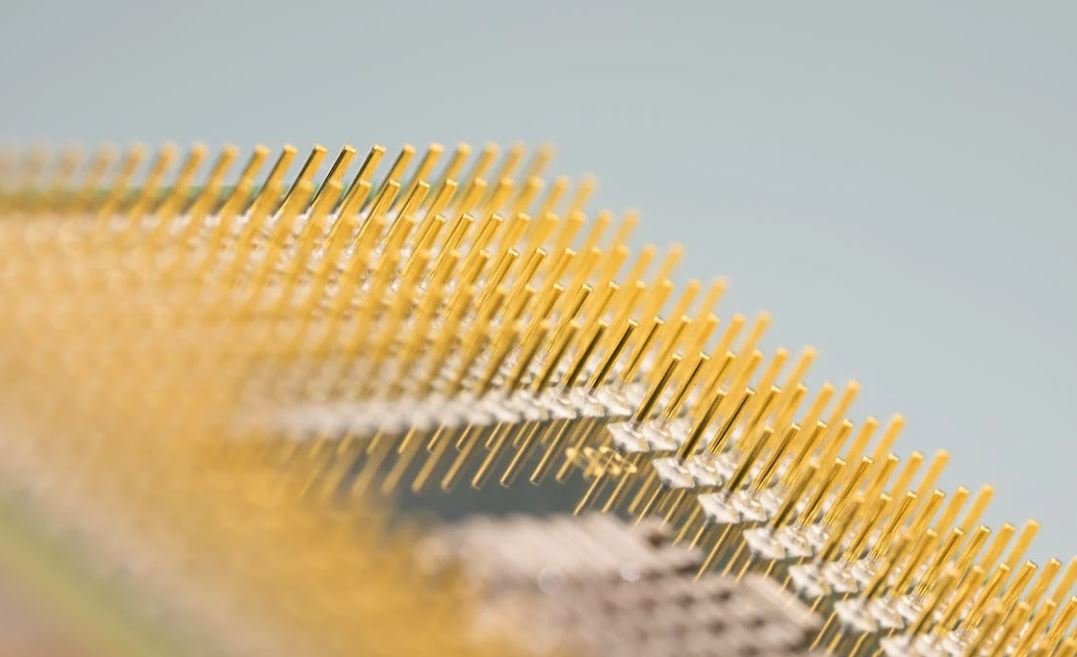Record Podcast Microphone
Recording a podcast requires a reliable and high-quality microphone. A good podcast microphone ensures clear and crisp audio that captivates your audience. With numerous options available in the market, it can be overwhelming to choose the best one for your needs. In this article, we will explore the key factors to consider when selecting a podcast microphone, popular options, and important specifications to look for to achieve professional-quality sound.
Key Takeaways:
- Choosing the right podcast microphone is crucial for producing high-quality audio.
- Consider factors such as microphone types, polar patterns, and connectivity options.
- Some popular podcast microphones include the Audio-Technica ATR2100x-USB and the Blue Yeti.
- Important specifications to look for include frequency response and signal-to-noise ratio.
- Remember to consider your budget and recording environment when selecting a microphone.
Microphone Types and Polar Patterns
There are two main types of microphones commonly used for podcasting: dynamic microphones and condenser microphones. Dynamic microphones are sturdy and can handle higher sound pressure levels, making them ideal for recording in noisy environments. On the other hand, condenser microphones are more sensitive and capture greater detail, making them suitable for studio-like recordings.
Dynamic microphones are like the workhorses of podcasting, providing durability and versatility.
Polar patterns determine the directionality of the microphone’s sensitivity to sound. The most common polar patterns for podcasting are:
- Cardioid: Picks up sound primarily from the front and rejects noise from the sides and rear.
- Omnidirectional: Captures sound from all directions, making it useful for interviews or recording multiple voices.
- Bi-directional: Picks up sound from the front and rear while rejecting noise from the sides. Great for capturing conversations between two individuals facing each other.
| Microphone | Type | Polar Pattern | Price |
|---|---|---|---|
| Audio-Technica ATR2100x-USB | Dynamic | Cardioid | $99 |
| Blue Yeti | Condenser | Selectable (Cardioid, Omnidirectional, Bi-directional) | $129 |
Connectivity and Portability
When choosing a podcast microphone, it is essential to consider its connectivity options. Most microphones offer USB connectivity, allowing you to connect them directly to your computer without the need for additional audio interfaces. This simplicity makes USB microphones a popular choice for beginners. However, if you require more advanced features or plan on expanding your setup in the future, consider microphones with XLR connectivity for compatibility with external audio interfaces.
Selecting a USB microphone can be a convenient option if you’re just starting out, as it eliminates the need for additional equipment.
Portability is another factor to consider, especially if you plan on recording on-the-go or in various locations. Some microphones are lightweight and compact, perfect for travel, while others may be more robust and better suited for stationary recording in a controlled environment.
| Microphone | Frequency Response | Signal-to-Noise Ratio | Weight |
|---|---|---|---|
| Audio-Technica ATR2100x-USB | 50 Hz – 15 kHz | ≥ 90 dB | 268 g |
| Blue Yeti | 20 Hz – 20 kHz | 100 dB | 550 g |
Choosing the Right Microphone
When selecting a podcast microphone, it is crucial to consider your budget, intended recording environment, and personal preferences. If you often record in noisy environments or require durability, a dynamic microphone might be the better choice. On the other hand, if you aim for studio-like audio quality and have a controlled recording space, a condenser microphone could be the right option. You may also consider factors such as budget, connectivity options, and portability to ensure the microphone suits your specific needs.
Ultimately, the best podcast microphone for you will depend on your individual requirements and preferences. Remember to read reviews, compare specifications, and, if possible, test out different models to find the perfect fit for your podcasting journey.

Record Podcast Microphone
Common Misconceptions
One common misconception people have about record podcast microphones is that they need to invest in an expensive microphone in order to achieve high-quality recordings. However, this is not necessarily true. While it is true that higher-end microphones often offer better sound quality, there are many affordable options available on the market that can still deliver excellent results.
- Expensive microphones do not guarantee better sound quality.
- Affordable microphones can still provide excellent results.
- Consider the specific needs of your podcast before investing in a microphone.
Another misconception is that USB microphones are inferior to XLR microphones. USB microphones have gained popularity in recent years due to their convenience and ease of use. While XLR microphones offer more professional features, USB microphones can still capture high-quality audio and are ideal for beginners or those on a budget.
- USB microphones are convenient and easy to use.
- XLR microphones offer more professional features.
- USB microphones are suitable for beginners or those on a budget.
Some people believe that a microphone’s brand is the most important factor when choosing a recording podcast microphone. While reputable brands often produce high-quality microphones, the brand alone does not determine the microphone’s performance. It is crucial to consider the specific specifications, such as frequency response and polar pattern, to ensure it meets your podcasting needs.
- Brand does not necessarily determine microphone performance.
- Consider the microphone’s specifications for your podcasting needs.
- Reputable brands often produce high-quality microphones.
There is a misconception that using a built-in laptop or smartphone microphone is sufficient for recording podcasts. While these built-in microphones are convenient for casual use, they often lack the clarity and sensitivity required for professional podcast recordings. Investing in a dedicated podcast microphone can significantly improve the audio quality of your recordings.
- Built-in laptop or smartphone microphones lack clarity and sensitivity.
- Dedicated podcast microphones provide better audio quality.
- Investing in a microphone is recommended for professional podcast recordings.
Finally, many people mistakenly believe that microphones with the highest sound sensitivity (measured in decibels) are always the best choice. While sensitivity is an essential factor in microphone selection, other factors like noise cancellation and frequency response can also impact the overall audio quality. It is crucial to find a balance between sensitivity and other features to select the microphone that best suits your podcasting needs.
- High sound sensitivity does not guarantee the best microphone choice.
- Noise cancellation and frequency response are also important factors to consider.
- Find a balance between sensitivity and other features when choosing a microphone.

Introduction
In the age of podcasting, having high-quality audio is essential for a successful show. One of the key factors in achieving this is selecting the right microphone. In this article, we will explore various podcast microphones and their unique features, including their price, type, and standout characteristics. Each table presents different categories of microphones, providing valuable information for podcasters looking to enhance their audio recording setup.
Entry-Level USB Podcast Microphones
These affordable USB microphones are perfect for beginners and podcasters on a budget. They offer easy plug-and-play functionality and produce decent sound quality.
| Microphone Model | Price Range | Type | Notable Feature |
|---|---|---|---|
| Samson Meteor | $49 | Condenser | Compact and portable |
| Rode NT-USB Mini | $99 | Condenser | Studio-quality sound |
| Audio-Technica ATR2100x | $129 | Dynamic | Dual USB/XLR connectivity |
Mid-Range XLR Podcast Microphones
For podcasters seeking a more professional setup, XLR microphones offer greater versatility and superior audio quality. They require an audio interface to connect to a computer.
| Microphone Model | Price Range | Type | Notable Feature |
|---|---|---|---|
| Shure SM7B | $399 | Dynamic | Optimized for voice recording |
| Rode Procaster | $269 | Dynamic | Broadcast-quality sound |
| Sennheiser MD421 | $379 | Dynamic | Robust and durable |
High-End Condenser Podcast Microphones
Condenser microphones provide exceptional audio reproduction and sensitivity, making them a popular choice among professional podcasters and studios.
| Microphone Model | Price Range | Type | Notable Feature |
|---|---|---|---|
| Neumann U87 | $3,199 | Large Diaphragm | Industry-standard microphone |
| Shure SM58 | $99 | Dynamic | Unbeatable durability |
| AKG C414 | $999 | Large Diaphragm | Versatile for various recording scenarios |
Wireless Podcast Microphones
For those who prefer a wire-free setup or need the flexibility to move around during recordings, wireless microphones provide convenience without compromising sound quality.
| Microphone Model | Price Range | Type | Notable Feature |
|---|---|---|---|
| Sennheiser AVX Digital Wireless | $849 | Condenser | Automatic frequency management |
| RodeLink Filmmaker Kit | $399 | Condenser | Multiple transmitters and receivers |
| Shure GLXD24/SM58 | $499 | Dynamic | High-quality digital audio |
Podcast Microphones for On-the-Go
Portable microphones are ideal for podcasters who frequently travel or record in different locations. These microphones offer convenience and excellent sound quality.
| Microphone Model | Price Range | Type | Notable Feature |
|---|---|---|---|
| ZOOM H5 Handy Recorder | $279 | Dynamic | Built-in X/Y stereo microphones |
| Rode SmartLav+ | $79 | Lavalier | Clip-on microphone for interviews |
| IK Multimedia iRig Mic HD 2 | $129 | Condenser | Compatible with iOS and Android devices |
Conclusion
Choosing the right podcast microphone is crucial for delivering professional-sounding audio to your listeners. Whether you’re just starting out or looking to upgrade your current setup, there is a wide range of options available to suit your needs. From entry-level USB microphones to high-end condenser models and wireless solutions, each category offers unique features and benefits. Consider your budget, recording environment, and desired audio quality when selecting a microphone for your podcast. With the right microphone in hand, you can record and share your content with confidence.
Frequently Asked Questions
Record Podcast Microphone
What is a podcast microphone?
Which type of microphone is best for recording podcasts?
What are some popular podcast microphones?
Do I need an expensive microphone for podcasting?
What other equipment do I need with a podcast microphone?
Should I use a USB or XLR microphone for podcasting?
How do I connect a podcast microphone to my computer?
What is the ideal recording environment for podcasting?
Can I use a smartphone as a podcast microphone?
How can I improve the sound quality of my podcast recordings?


Leave a Reply